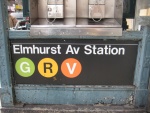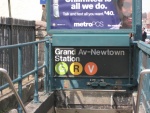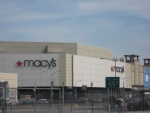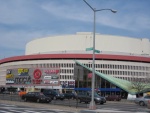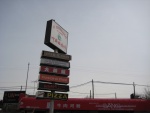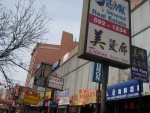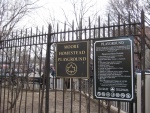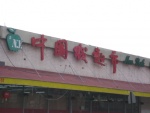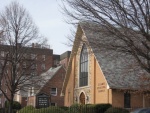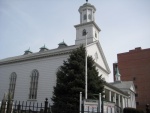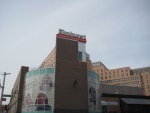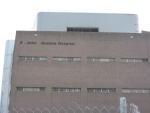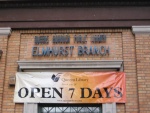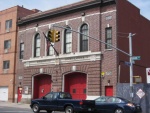Views
+ Main Page of Elmhurst
+ The History of Elmhurst
+ Testimonials of Elmhurst
+ My Conclusions about Elmhurst
Contents |
Elmhurst Today
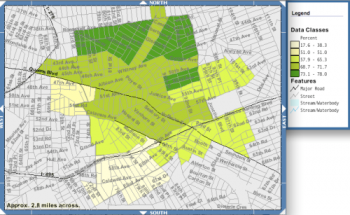
The Diversity of Elmhurst
Elmhurst is a neighborhood recognized as one of the most ethnically diverse in the world, and it definitely exceeds its reputation as such. A place of great interaction, full of people of different races/ethnicities, such as Asians and Hispanics. Many people speak in their native tongue, and many of the signs end up being in many different languages.
Elmhurst is continuing to grow as an ethnically diverse community, as opposed to its historically Dutch and English settlers. With the increase in immigration rates during the past century, Elmhurst is known as one of the most diverse areas in the city. According to the Census 2000[2], Elmhurst has a total population of about 105,723 people; the dominant ethnic groups are Asian (41,174) and Hispanic/Latino (45,529). The white population amounts to 35,598 people, the black population arrives at little more than 2,000, and there are about 20,000 other races in the area. 83,764 people speak a language other than English at home, with 54% speaking English less than “very well.” The total number of occupied housing units is 33,089, with 24,291 renter-occupied units and 8,798 owner-occupied units. As shown, the majority of housing units are rented, as the families in the area are usually of middle or lower class. The average income for households is around $38,000. Many of the immigrants in the area work in factories throughout the city or take up other labor jobs.[2]
Although Elmhurst is known as an extremely diverse area, the residential patterns of the area show that the majority of each race or ethnic group tend to be especially concentrated in different parts of Elmhurst. Although all the different ethnic groups are spread throughout the area, according to the Census 2000, the majority of Whites tend to be more concentrated to the south of Elmhurst, Asians are concentrated in the center, Blacks or African Americans tend to be more concentrated toward the northeast, and Latinos or Hispanics tend to be concentrated toward the northwest. The group that is termed "some other race" is largely concentrated to the north, mixed in between Latinos, Hispanics, and Black or African Americans.[2]
Places in Elmhurst
First of all, Elmhurst is actually a conveniently reachable town because of the three subway stations. The Elmhurst Av Station is in the Moore Homestead Playground and New York Supermarket area. The Grand-Av Newtown Station is near the Elmhurst Library and the Queens Place Mall. The Woodhaven Boulevard Station is near the Queens Center Mall.
Elmhurst is a place of great activity and diversity. It is home to several shopping institutions such as the Queens Center Mall and the Queens Place Mall. Several of the blocks along Queens Boulevard are lined with a string of furniture stores.
The stores and restaurants in Elmhurst are also quite diverse. The restaurants are fit for a wide variety of taste buds. As an ethnically diverse neighborhood, there are several Asian restaurants. Towards the north of Elmhurst, around Broadway, there are restaurants that include cooking styles from China, Malaysia, Thailand, Vietnam, and much more.
Several of the markets in Elmhurst are of Asian origin, such as the Great Wall Supermarket, Kam Lum Supermarket, the New York Supermarket, and the Hong Kong Supermarket.
The neighborhood parks, such as Crowley Playground, Hoffman Park and Moore Homestead (Broadway)
Park, are usually abundant with children and teenagers.
The parks, malls, and markets are usually great places for people of all ages to interact with each other in the area, sometimes developing reputations well beyond the immediate area. The children (from middle-school students to college students) not only develop relationships with each other in school, they also develop them outside of school. Parks such as Crowley and Broadway invite many people to sports activities such as handball or basketball. There are many Asians and Hispanics/Latinos who go to these parks and get to know each other through playing games with each other. Despite some cultural and/or age differences, people develop relationships with each other because of going to such places.
There are several churches in Elmhurst. The churches include the St. Adalbert Church, the Ascension Roman Catholic Church, the Rock Church, the First Presbyterian Church of Newtown, the St. James Episcopal Church, and the Reformed Church of Newtown.
There were previously two main hospitals in the area, Elmhurst Hospital and St. John's Hospital. Elmhurst Hospital is a public hospital while St. John's Hospital was private. Unfortunately, the St. John's Hospital recently closed down. There is an Emergency Animal Hospital on Queens Boulevard. Elmhurst also has a basic Queens Public Library, a fire station, and two post offices.
Elmhurst is shown as a place of great convenience for many people looking for a place to reside in, as it is usually easier for immigrants to integrate into a population as diverse as Elmhurst's.
References
- ↑ http://factfinder.census.gov/servlet/ThematicMapFramesetServlet?_bm=y&-_MapEvent=displayBy&-tm_name=DEC_2000_SF3_U_M00084&-ds_name=DEC_2000_SF3_U&-tm_config=|b=50|l=en|t=403|zf=0.0|ms=thm_def|dw=0.05330623177477046|dh=0.02985067027414208|dt=gov.census.aff.domain.map.EnglishMapExtent|if=gif|cx=-73.877679|cy=40.735138|zl=3|pz=3|bo=|bl=|ft=350:349:335:389:388:332:331|fl=403:381:204:380:369:379:368|g=86000US11373|ds=DEC_2000_SF3_U|sb=50|tud=false|db=140|mn=30.7|mx=92.8|cc=1|cm=1|cn=5|cb=|um=Percent|pr=1|th=DEC_2000_SF3_U_M00167|sf=N|sg=&-redoLog=false&-geo_id=86000US11373&-_dBy=140&-_sse=on&-_lang=en
- ↑ 2.0 2.1 2.2 US Census Bureau. "Fact Sheet." http://factfinder.census.gov/servlet/SAFFFacts?_event=Search&geo_id=&_geoContext=&_street=&_county=11373&_cityTown=11373&_state=&_zip=11373&_lang=en&_sse=on&pctxt=fph&pgsl=010&show_2003_tab=&redirect=Y (accessed 4/10/09).
